Against the backdrop of the COP29 climate summit, Bloomberg published an article about the prospects for combating looming climate change. In five years, a milestone will be reached, the goals set for which, apparently, will no longer be achieved or will require tripling the forces and means to achieve them. This makes the task of defeating climate change by mid-century more difficult, but we must continue to try, because lives and economies are at stake.

Image source: AI generation Kandinsky 3.1/3DNews
In 2023, scientific research shows that carbon dioxide emissions will once again reach an all-time high. This happened despite a lot of efforts from governments, companies and organizations. A significant share of greenhouse gas emissions comes from the United States. The election of Donald Trump as the president of this country will mean the curtailment of many environmental initiatives, as this candidate has repeatedly stated during his election speeches. In other words, by 2030 the environmental situation in the United States is unlikely to improve and, most likely, will only get worse.
Climate warming not only threatens human health and life (both directly from temperature changes and indirectly from natural disasters and crop failures), but also threatens the economy. The non-profit organization CDP (Carbon Disclosure Project) estimates that a 1°C rise in temperature would reduce global gross domestic product by 12%.
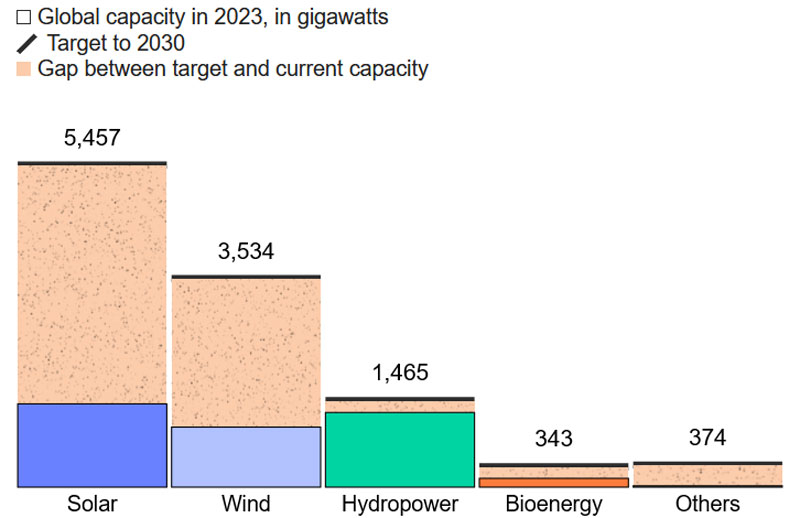
Realized and set goals. Image source: Bloomberg
The International Energy Agency estimates that between 2010 and 2023, solar energy capacity increased by about 40 times and wind power by about six times. Much more needs to be done in the remaining five years to make up for lost time. Thus, in 2023, about 0.5 TW of renewable energy was added worldwide, which means that by 2030 another 7.3 TW of green energy needs to be added. By comparison, in 2023, just under 9 TW of energy was generated worldwide from all sources, including dirty sources. Thus, by 2030, renewable energy sources should account for over 80% of global output. To implement this plan, at least $1 trillion will need to be invested in the sector annually, rather than the $623 million or so in 2023.
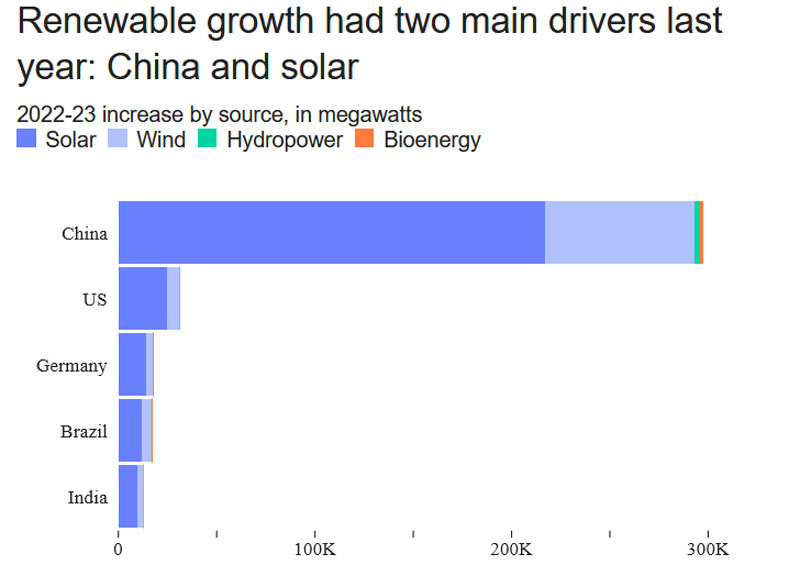
China is ahead of the rest
China is a leader in the deployment of renewable energy sources. India and several other emerging economies are also aiming to be at the forefront of green capacity adoption. Electricity consumption is rising worldwide, a trend that needs to be taken into account in energy planning.
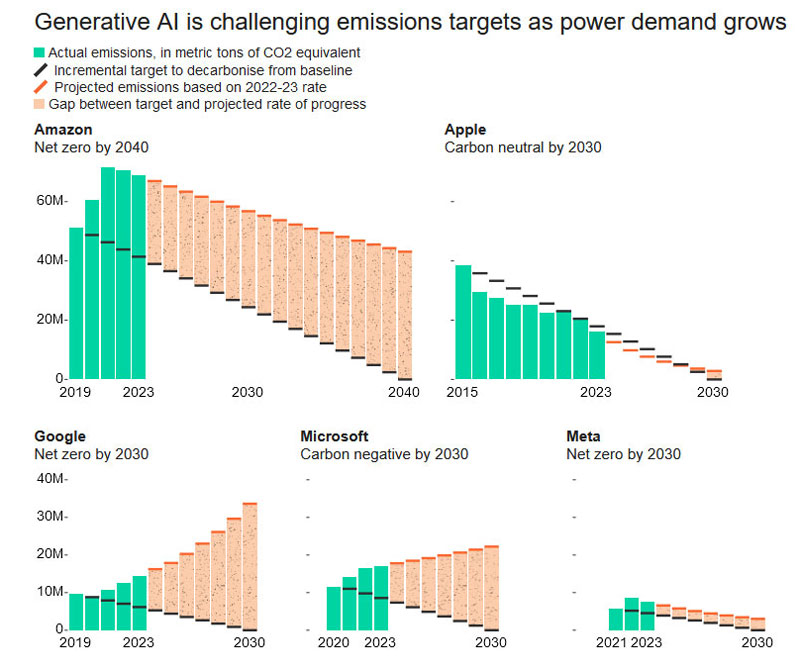
Promised to cut emissions but failed, AI is to blame
Artificial intelligence has dealt a significant blow to the climate agenda. With the growth of AI platforms and data centers, energy consumption among technology industry leaders has skyrocketed. Leading companies such as Google, Meta
According to the latest data, Google’s emissions are up by about two-thirds compared to 2020, and Meta

In contrast, Amazon has reported a decline in its pollution levels over the past two years, although the company has faced criticism for acquiring renewable energy credits. Meanwhile, Apple says efforts to incorporate cleaner energy into production and improve waste recycling have cut emissions by more than half since 2015.
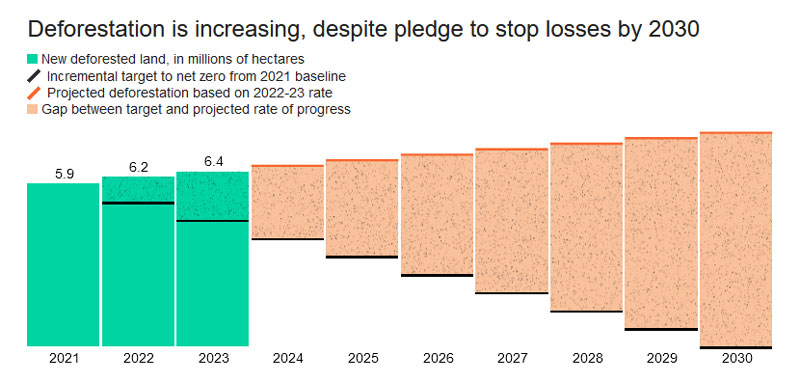
The agreement not to cut down forests remains on paper made from cut down wood.
A significant success in 2021 was the agreement by the leaders of 130 countries, which account for 90% of the world’s forests, to quickly stop logging this resource. Forests absorb carbon, prevent the expansion of agricultural land and, if not used for fuel, also reduce the carbon footprint. However, in fact, forests continue to be cut down at an ever-increasing rate, and there is no talk of any reduction. Attempts to impose sanctions and trade restrictions on deforestation have been met with hostility by trading partners and farmers. It is necessary to tighten legislation in this area, but national governments are slowing down the resolution of this issue.
Analysts estimate that about 6.4 million hectares of forests were destroyed in 2023, 45% more than needed to put the world on track to meet the 2030 target. The rate of reduction in deforestation should increase much faster than before, but there is little hope for this.
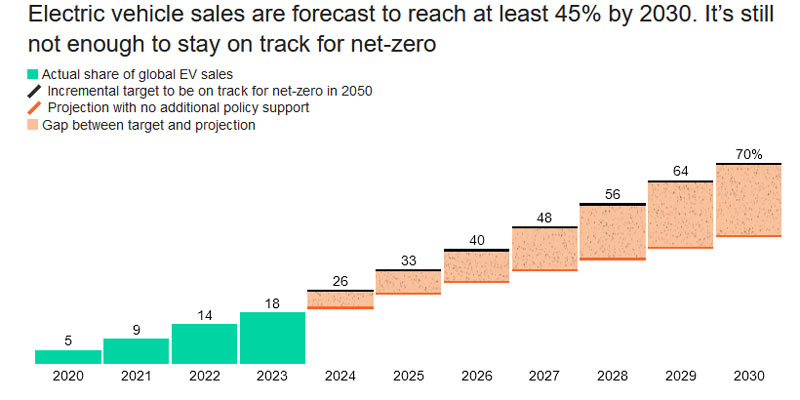
We need to sell more electric cars, but they don’t want to buy more of them.
The big hope for reducing emissions lies in electric vehicles. They need to sell more. To get the sector to zero emissions by 2030, electric models must account for 70% of new car purchases. It will also help reduce the need for 6 million barrels of oil per day by 2030.
BNEF forecasts about 16.6 million new electric vehicles will be sold this year and more than 30 million in 2027, transforming the passenger car segment, which currently accounts for more than half of all vehicle emissions. Without subsidies, electric vehicles should account for 45% of new car sales by 2030. However, to achieve net-zero emissions, this share would need to be significantly higher, up to 70%, which would require “moderate” subsidies.
At the same time, automakers are faced with a negative attitude towards electric vehicles, which in a number of parameters are inferior to cars with internal combustion engines, but exceed them in price. Since late last year, the group of 14 automakers that accounted for more than 40% of EV sales in 2023 have cut their overall 2030 sales targets by about 3.3 million vehicles, according to BNEF. In particular, Mercedes-Benz Group AG, Volvo and even Tesla, which planned to produce 20 million electric vehicles by 2030, have reduced their ambitions, but has now abandoned specific numbers, preferring vague formulations of “as many as possible.”
There is also no agreement on the protection of biodiversity in the world. To provide greater certainty, the Kunming-Montreal Global Biodiversity Framework was established. It was expected that countries would protect up to 30% of land, inland waters and seas and oceans by 2030. This is necessary, among other things, to conserve carbon in the soil. Attempts to direct efforts in a productive direction under the auspices of the UN led to nothing. By 2030, the target will not be achieved. There is no serious incentive to solve this problem, and there is no result.
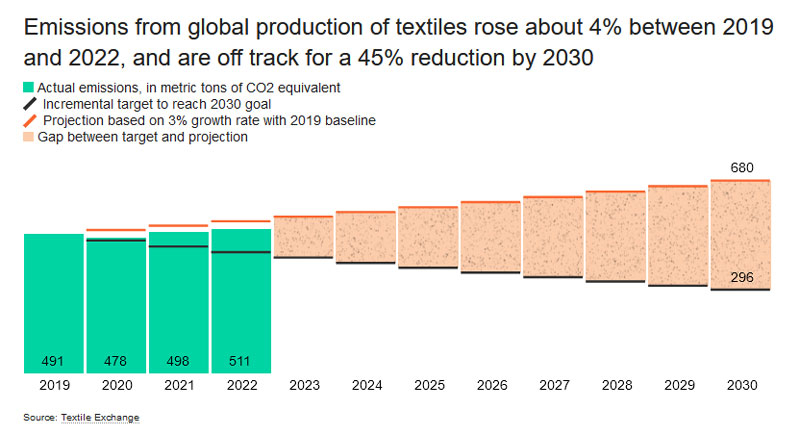
Fabric manufacturers fail to reduce water production and consumption
Significant emissions reductions, as well as reduced water consumption, are expected from fashion manufacturers. The (unlikely) goal is to reduce greenhouse gas emissions by 45% by 2030. However, demand for cheap and fashionable clothing has increased global fabric production to 124 million tons in 2023, and per capita consumption has nearly doubled since 1975.
Water use is another major issue. According to the World Wildlife Fund, producing one cotton T-shirt can require up to 2,700 liters of water—about the same amount needed to sustain a person for 900 days. A large group of companies have pledged to cut consumption by 30% by 2030, although process water use rose last year. And this group is not alone – they promise to reduce consumption, but in reality increase it.
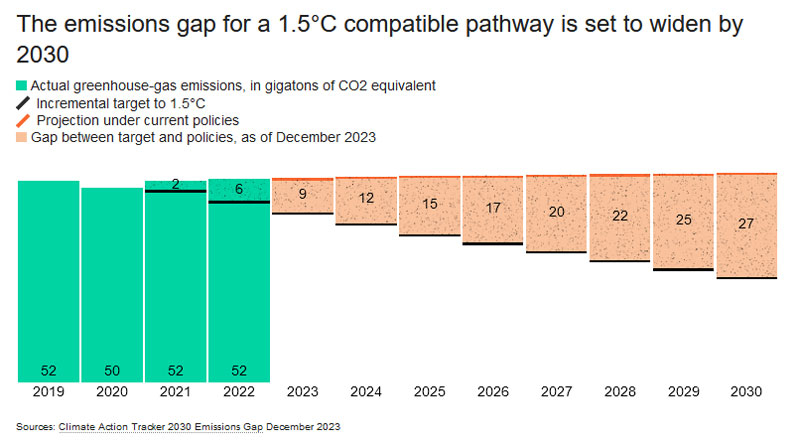
Air emissions continue to rise, although everyone really wants to reduce them
Controlling the level of emissions into the atmosphere is also not working out. The Paris Agreement calls for warming to be kept to 1.5°C above pre-industrial levels. To achieve this, by 2030, annual global emissions must be reduced by 42%. In fact, the opposite is happening: in 2023, emissions increased by 1.3%, although they should decrease by 7.5% annually.
Developed countries are partially managing to reduce emissions. For example, a group of 10 major developed countries, including the US, Japan and Germany, cut emissions by 4.2% in 2023, reducing their environmental impact to the lowest level since 1970. In contrast, among 10 key emerging economies, overall emissions rose by 4.7%.
Energy consumption in developing countries is growing rapidly, and most still rely on polluting coal and gas for their energy systems. India, already the second-largest coal consuming country, will increase electricity demand faster than any other major economy by 2026, according to the IEA. At the same time, India is in no hurry to spend huge sums on renewable energy, unlike, say, China, which invested $130 billion in renewable energy in the first half of 2024 alone. The rest of the countries in the Southeast Asian region invested only $2.9 billion in the same area. The result of such a policy of irresponsibility could be an increase in the Earth’s temperature by 2.6–3.1°C by the end of the century.
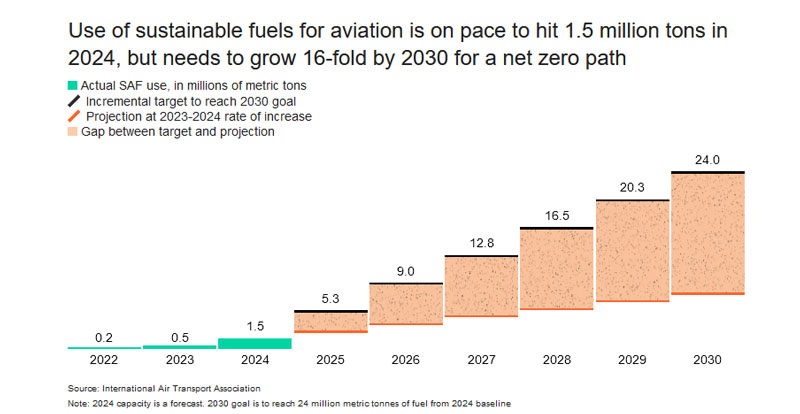
Airlines relying on used cooking oil from snack bars in anticipation of ‘sustainable’ fuel
Aviation remains another global problem. It contributes 2% to emissions annually. The problem can be solved by clean fuel, which, by and large, does not exist yet. For now, aviation is relying on biodiesel, which is mainly produced from waste vegetable oil. A number of airlines hope to increase the level of clean fuel in operating costs to 10% by 2030, or 24 million tons annually, but the market will not provide that much used oil under any circumstances. So far, no one knows how to resolve this issue.
This may sound surprising, but used vegetable oil is supplied to the United States from China, collected from eateries – it remains in excess after frying. It is this oil that is mainly converted into biodiesel, which is so necessary for aviation.
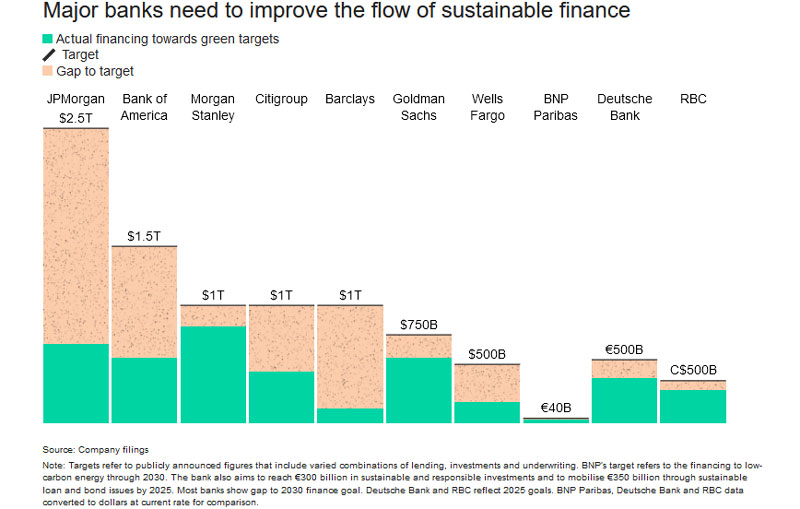
Banks that should
The banking sector could do more for the climate agenda than it is doing, analysts believe. Wall Street bankers must commit $215 trillion to the green economy by 2050. Moreover, they must stop funding the fossil energy sector at the same level. For example, if in 2022 the ratio of investments in fossil energy and renewable energy sources was 1 to 0.73, then by 2030 it should be 1 to 4. The graph above shows which banks should invest how much in renewable energy.